#Marduk Inspiration
Explore tagged Tumblr posts
Text
God give me the strength to go out in the cold to obtain beer and snacks. In his name amen be it so
#gods Marduk and Shamash I implore you#the cold weather has me Ea-nasir-ing my daily life smh#not that he would pray to a god other than Ea his namesake and clear inspiration#Ea is the god of water and trickery. Basically everything the color blue in Magic the Gathering represents. But he's a trickster god#ask me how to pronounce Ea-nasir bc I'm tired of hearing it wrong. I RECOGNIZE THAT VERB AND THAT VERBAL FORM al;jkfsdalj;kafsdj;lkfasdlj;k
1 note
·
View note
Text

Wolverine
The Wolverine was developed as a fast strike BattleMech, one which could take part in missions requiring speed and firepower but too hazardous for lighter recon 'Mechs. Although meeting all the requirements for just such a machine, the Wolverine has since become known for its versatility and is considered a jack of all trades throughout the Inner Sphere. With the same electronics package as the Phoenix Hawk and mobility that allows it to keep up with most medium 'Mechs, the Wolverine is often used for command purposes when working with medium units, in spite of the terrible visibility and cramped cockpit due to the placement of the head-mounted weaponry.
During the Age of War, the early history of the Wolverine was born as a direct result of the Federated Suns' need for a front-line unit that could keep up with a forward advance and outmaneuver enemy BattleMechs. At the time, while they fielded their own versions of the Mackie and BattleAxe - they were too massive, slow, and lacked maneuverability. When the Terran Hegemony debuted their Shadow Hawk and Griffin - the Davions suddenly had their answer in which they could model a design that fit their requirements for an ideal cavalry 'Mech. Fierce competition followed suit by companies within Richard Varnay's Capellan March with Norse BattleMech Works ultimately winning a contract with the Federated Peacekeeping Forces. The designers, led by Supervising Engineer Russell Bell, while using the aforementioned inspirations opted for maneuverability, followed by a balanced weapons loadout with both offensive reach and close-in firepower without taxing heat exchange systems. Initially this was accomplished with the inclusion of a prototype Autocannon and medium-class laser, but Norse BattleMech Works felt this made the design too lightly armed compared to the competitors it was influenced by. The design team then made arrangements to allow the initial prototype to mount a PPC and additional heat sinks in place of the Autocannon, but the first PPC they were able to secure was completely unsuitable for the test frame, due to significant overheating and EM interference making for a wholly inaccurate weapon.
This initial failure did not go unnoticed by the FPF High Command and they urged the company to stick with the initial proposed design. Instead of rushing to create and test alternative weapon loadouts, the Norse engineers opted instead to stick with the original prototype for the Wolverine while electing for heavier levels of armor protection. Most of the armor was focused on the legs and arms, while extra plating was specially placed around the main joints to protect from shrapnel and debris. The end result was a 'Mech that was more stable, cooler running, and could endure severe punishment while outjumping Shadow Hawks and Griffins. Prince Varnay himself would receive the very first 4 production-grade WVR-1R Wolverines in 2471. It would go on to become the standard AFFS BattleMech for centuries, ironically serving as a template for the Hegemony's upgrades of the 'Mechs it was based on to in turn match the Wolverine. To counter this, Norse BattleMechs introduced yet another more influential variant in 2490 known as the WVR-3R and would not be fully upgraded to modern standards for another 85 years.
Purchasing the primary production rights to the design from Norse, Kallon Industries introduced the definitive WVR-6R Wolverine in 2575 for the newly-formed Star League Defense Force in the lead-up to the Reunification War, where it served with distinction. Afterwards it was approved for use by the Great Houses and became quite common on the battlefields of the Succession Wars after the fall of the Star League. Besides being produced by Kallon's factories on Nanking and Thermopolis, Free Worlds Defense Industries and Victory Industries later acquired the right to build Wolverines from their plants on Gibson and Marduk respectively. The Free Worlds League was thus the largest user of Wolverines followed thereafter by the Federated Sun-turned-Federated Commonwealth. The Fourth Succession War brought about minor changes when the House Davion captured Nanking from the Capellan Confederation but lost Marduk to the Draconis Combine. In the end the exchange was a net gain for Federated Suns thanks to the larger Nanking factory with the Confederation the clear loser. Houses Davion, Marik and Kurita all introduced new variants of the Wolverine which exploited the recent recovery of lostech just prior to the Clan Invasion.
During the Combine-Ghost Bear War House Kurita found itself running short of equipment when they lost Marduk and Al Na'ir to Duke James Sandoval's surprise attack, although DCMS forces managed to recapture Marduk in mid-3064. Inspired by Vicore Industries' "Project Phoenix" initiative Victory Industries went about scouring the entire Combine for any old Wolverine chassis in order to perform a complete strip, disassembling those in the worst shape for their parts and apply a modernizing factory refit to the rest. By 3067 this effort had virtually picked the Draconis Combine clean of older Wolverine machines but the new WVR-8K was so well received it inspired the production of brand-new models. The Federated Suns was similarly inspired by the success of the WVR-8K to perform their own updates on the aging design although the League, themselves still prolific Wolverine users, had yet to institute what turned out in the end to be a long and costly program.
The Wolverine carries a weapons payload that is both versatile and, at the same time, limited by its ammunition dependencies. The primary weapon is a GM Whirlwind Autocannon/5. This weapon, mounted in the right arm along with one ton of ammunition, allows the Wolverine to cause damage to the enemy at respectable ranges. This is backed up for short range work by a Harpoon-6 SRM-6 launcher with one ton of reloads in the left torso and a single Magna Mk II medium laser mounted in the head. The laser is the most unique aspect of the Wolverine as it is mounted in a ball turret originally providing a 360° field of fire on early models of the Wolverine. Following the addition of the Harpoon launcher and Tek BattleCom electronics blister, a fire-interrupt circuit had to be added to prevent pilots from shooting their own 'Mech.
Five Northrup 12000 jump jets, with two in either leg and the fifth in the rear torso, improves upon the Wolverine's relatively fast cruising speed of 54 km/h by allowing it to jump up to 150 meters at a time. Unfortunately the jets are slightly underpowered for this role and must be operated near maximum thrust to achieve their potential, resulting in increased wear and tear on the components. For this reason a number of variants were introduced which simply removed the jump jets.
Nine and a half tons of armor make the Wolverine well protected and emphasize its survivability when undertaking dangerous reconnaissance missions. Twelve heat sinks also provide adequate heat dissipation even in the event of damage to the fusion engine, further emphasizing the durability of the machine. In its role as a command 'Mech the Wolverine is well equipped with the same Tek BattleCom system with multichannel transceiver/receiver as found on the Phoenix Hawk. Well shielded in the head blister this setup allows the Wolverine to provide superior electronic support when leading other 'Mechs or conducting reconnaissance on its own.
10 notes
·
View notes
Text
Every time I read this book I just stare in absolute bafflement at this passage:
'The Olympian pantheon is unknown, and the Outer Plane of Olympus is known in the Forgotten Realms by its elvish name, Arvandor. Sune Firehair, however, sounds suspiciously like Athena of the Greeks, and may be the same Power.' - Cyclopaedia of the Realms
Yes. The flighty goddess of beauty who flirts with everyone she meets sounds so much like the maiden goddess of wisdom.
Only now for some reason have I realised that's a mistake, and either whoever was typing this up doesn't know their mythology and/or the editor somehow failed to catch their mistake.
Either way, some sources suggest Sune is Aphrodite's aspect on Toril. Because the Faerûnian pantheon wasn't messy enough, taking inspiration from the Theoi already, let's add an actual Olympian to the chaos pot.
(For other immigrants: Oghma is Celtic; Mielikki, Loviatar (maaaybe Ilmater, although the name similarity to Ilmatar could be coincidence) were Finnish; Tyr is Norse; Hoar, Bahamut/Marduk and Tiamat were Babylonian. The Egyptians all stuck together in their own pantheon over there and aren't joining your insanity.
Hilariously, Loviatar - who fucking hates Talona - was the mother of disease back on Earth. idk. Maybe Kiputytto is less a totally seperate goddess and more half of Loviatar that somehow was separate and she lost it?)
7 notes
·
View notes
Text
WHO IS CROWLEY AFTER THE FALL (PART2)
Here it is finally.
So what is the Leviathan.
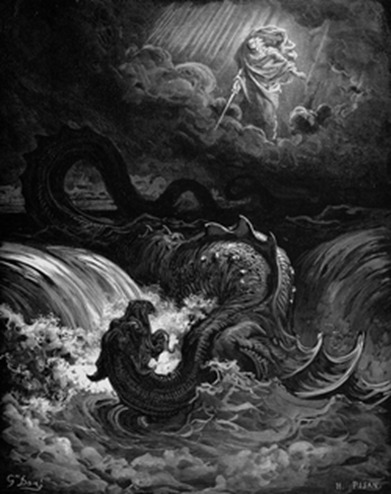
In mythology and theology the Leviathan is a sea-serpent and is mentioned in several books of the Hebrew Bible such as the Book of Job and Book Isaiah and Book of Enoch. The Leviathan of the Book of Job is a reflection of the older Canaanite Lotan, a primeval monster defeated by the god Baal Hadad. Parallels to the role of Mesopotamian Tiamat defeated by Marduk have long been drawn in comparative mythology, as have been wider comparisons to dragon and world serpent narratives such as Indra slaying Vrtra or Thor slaying Jörmungandr.
Once again we see the pattern of Biblical creatures being “inspired” from pagan ones.
Thomas Aquinas described Leviathan as the demon of envy, first in punishing the corresponding sinners. Peter Binsfeld likewise classified Leviathan as the demon of envy, as one of the seven Princes of Hell corresponding to the seven deadly sins. Leviathan became associated with, and may originally have been referred to by, the visual motif of the Hellmouth, a monstrous animal into whose mouth the damned disappear at the Last Judgment, found in Anglo-Saxon art from about 800, and later all over Europe.
In the Book of Enoch, The Leviathan is a female giant chaos serpent that lives deep in the ocean, while her mate, Behemoth, is a male giant chaos beast (based off of a hippopotamus or water-ox) who lives in the mythical desert of Duidain, East of Eden.
Ring any bells. Chaos mongering (fomenting), ox, eastern gate of eden….

The Hebrew word that translates to Leviathan (Livyatan) appears six times in the Old Testament. One of them is in Job 41. The word is derived from the root Iwy or ‘ twist, coil’ and means ‘the sinuous one.’ So I think we can establish that this creature is at least indicated to be snake-like. Scholars trace the etymology of whale and crocodile
In the Book of Isaiah it is mentioned that the beast will rise from the water and will be defeated by God on the Last Day. However, quite interestingly nowhere in the Old Testament is the Leviathan written as evil. Only later scholars have equated it with the devil so that the battle between God and Chaos can be interpreted as the battle between God and the Devil.
Now let’s make this more interesting: The Gnostic sect venerate the biblical serpent of the Garden of Eden as a symbol of wisdom, which the malevolent Demiurge tried to hide from Adam and Eve. They identify the Leviathan as the serpent of Eden and in this belief system the Leviathan appears as an Ouroboros, separating the divine realm from humanity by enveloping or permeating the material world.
I mean I don’t even need to say anything further.
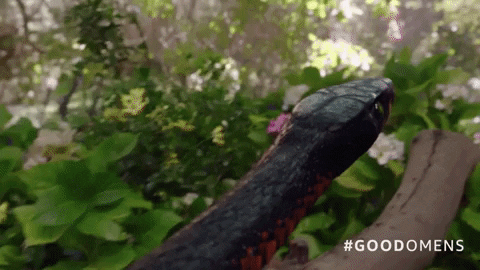
And he does show up in GO Season 2. The matchbox.
Here

When did this happen, I wonder……hmmmmmm
Oh YES!
Crowley wearing Aziraphale’s face
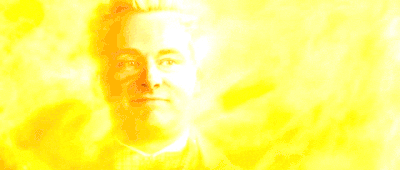
Here’s the rest of the passage from Job
1 Canst thou draw out leviathan with an hook? or his tongue with a cord which thou lettest down?
2 Canst thou put an hook into his nose? or bore his jaw through with a thorn?
3 Will he make many supplications unto thee? will he speak soft words unto thee?
4 Will he make a covenant with thee? wilt thou take him for a servant for ever?
5 Wilt thou play with him as with a bird? or wilt thou bind him for thy maidens?
6 Shall the companions make a banquet of him? shall they part him among the merchants?
7 Canst thou fill his skin with barbed irons? or his head with fish spears?
8 Lay thine hand upon him, remember the battle, do no more.
9 Behold, the hope of him is in vain: shall not one be cast down even at the sight of him?
10 None is so fierce that dare stir him up: who then is able to stand before me?
11 Who hath prevented me, that I should repay him? whatsoever is under the whole heaven is mine.
12 I will not conceal his parts, nor his power, nor his comely proportion.
13 Who can discover the face of his garment? (penetrate his coat of armor) or who can come to him with his double bridle?
14 Who can open the doors of his face? his teeth are terrible round about.
15 His scales are his pride, shut up together as with a close seal.
16 One is so near to another, that no air can come between them.
17 They are joined one to another, they stick together, that they cannot be sundered.
18 By his neesings a light doth shine, and his eyes are like the eyelids of the morning.
19 Out of his mouth go burning lamps, and sparks of fire leap out.
20 Out of his nostrils goeth smoke, as out of a seething pot or caldron.
21 His breath kindleth coals, and a flame goeth out of his mouth.
22 In his neck remaineth strength, and sorrow is turned into joy before him.
23 The flakes of his flesh are joined together: they are firm in themselves; they cannot be moved.
24 His heart is as firm as a stone; yea, as hard as a piece of the nether millstone.
25 When he raiseth up himself, the mighty are afraid: by reason of breakings they purify themselves.
26 The sword of him that layeth at him cannot hold: the spear, the dart, nor the habergeon.
27 He esteemeth iron as straw, and brass as rotten wood.
28 The arrow cannot make him flee: slingstones are turned with him into stubble.
29 Darts are counted as stubble: he laugheth at the shaking of a spear.
30 Sharp stones are under him: he spreadeth sharp pointed things upon the mire.
31 He maketh the deep to boil like a pot: he maketh the sea like a pot of ointment.
32 He maketh a path to shine after him; one would think the deep to be hoary.
33 Upon earth there is not his like, who is made without fear.
34 He beholdeth all high things: he is a king over all the children of pride.
The Leviathan is a magnificent creature. And the very fact that God goes to so much trouble to describe the magnanimity of this creature is to show what God has created and hence Her magnanimity must be even greater in comparison for the Creator is always superior to the Creation. And if God can so easily abuse and humiliate this beautiful monster, then God must be worshipped and feared.
Though to the unsuspecting eye these passages may ring no familiar bells, a closer look makes you realize how Crowley-coded they are. And to think that in a story where Neil has never witten or shown anything that wasn’t woven in finely with the characters, I alwsy wondered why he chose the Book of Job for the minisode when he could have included any other one.
But it reminded me that Crowleys character is truly unrelenting. He’s a nether millstone. He won’t give up that easily. He absolutely won’t submit to anyone, and he’s shown time and time again that his vociferous litanies about running away disappear as soon as someone or something he cares about is in danger (i.e. Aziraphale). And the second coming will also threaten his creation (the universe). His refusal to submit to authority, the refusal to be subjugated is the reason he fell in the first place. And quite interestingly he doesn’t own Hell either. He resists that too. For him it’s not Heaven or Hell that matters but the resistance to Power.
I also think it’s also fitting that the Leviathan is perceived to be a monster that must be slain or enslaved but in reality is another of God’s creations just like the sun and the stars and the rivers and the mountains.
And it makes me think of how Crowley has always been labeled as evil because he fell. I think of how, at heart, he is truly gentle and kind, he’s a starmaker. But his fall, his appearance, his desire to be autonomous and his grey moral campus make him feared and a target. And that has made him the embodiment of chaos. His refusal to submit himself to the uniformity of both worlds, to the rules and guidelines that create this illusion of order sets him apart from them. He embraces the chaos that grayness offers, that being ‘human’ brings. And hence the final battle will be between God and chaos with God justifies as being the battle between good and evil because, well, he’s a demon.
The Leviathan being historically associated with the sin of envy is again I think written into the plot very carefully. He is envious of humanity’s ability to question God, to have choices to not be doomed to heaven or hell for all eternity. He is envious of what Maggie and Nina have. He’s envious of what Beelz and Gabe have.
“I mean if Gabriel and Beelzebub can go off together…..”
And then him rejecting Azirapahle’s offer— he has spent his life (a long, long life) rejecting power and authority. In his relationship with Aziraphale he found his sanctuary, a relation clean of power dynamics. Up till now they were both equal. But this new offer jeopardizes that.
And I love how his ego and pride come to play here. He would never accept being “second in command to anyone”. And his envy of how God’s mercy is free for some but wholly denied to him.
#good omens season 2#good omens#crowley#aziraphale#azicrow#aziraphale x crowley#ineffable husbands#good omens meta#good omens brainrot#good omens book#beelzebub#gabriel#good omens broke me#christianity#history#relegious iconology#leviathan#demons#angels#go s2#go season 2#give me season 3 or give me death#bible fanfiction#meena rants
46 notes
·
View notes
Note
Is there more information about Melam, besides 'the substance that covered the gods in terrifying splendor,' which makes humans experience 'the physical creeping of the flesh'?
You’re citing a subpar wikipedia article like it’s a primary source. Please don’t do that in my ask box.
Melam(mu) is an ordinary word referring to the abstract notion of radiance of deities (as well as certain other supernatural entities, most famously Humbaba; rulers; places and objects regarded as numinous, like temples, statues and cultic paraphernalia; and so on). Since terms like melam(mu) and puluḫtu have a more specific meaning than the generic namru, “shining”, more poetic translations like “awe-inspiring radiance” are fairly common. For more context see Radiant Things for Gods and Men: Lightness and Darkness in Mesopotamian Language and Thought by Shiyanthi Thavapalan (esp. p. 14-15). A deity could be described as possessing a plurality of melam, though this is generally rare (most famously, Humbaba has seven, but there are isolated attestations available for Nergal and Marduk too) and the term is typically left singular.
In textual sources melam is already attested in the Early Dynastic period (see the Reallexikon entry by Manfred Krebernik for a list of attestations), but in visual arts it only shows up in a coherent, consistent way in the Neo-Assyrian period, where deities are often surrounded by a so-called “nimbus” (The Melammu as Divine Epiphany and Usurped Entity by Mehmet-Ali Ataç, p. 295). Literary texts can present melam as something tangible - a divine garment, crown, wig and so on (for some examples see A New Occurrence of the Seven Aurae in a Sumerian Literary Passage Featuring Nergal by Jeremiah Peterson) - or even as logs of wood (in the Humbaba narrative; see The Babylonian Gilgamesh Epic: Introduction, Critical Edition and Cuneiform Texts by Andrew R. George, p. 10). However, this holds true for many abstract concepts.
8 notes
·
View notes
Text
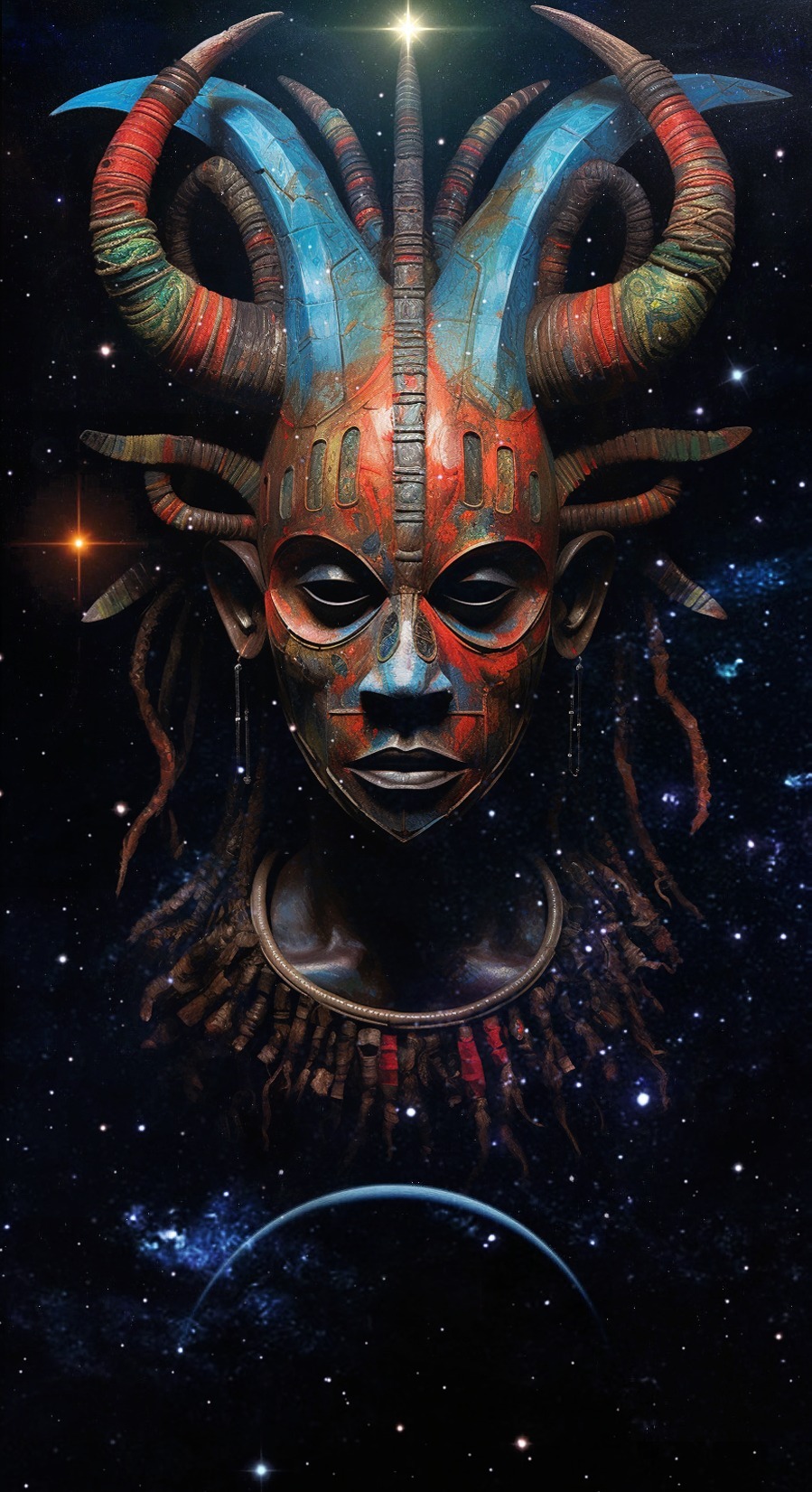
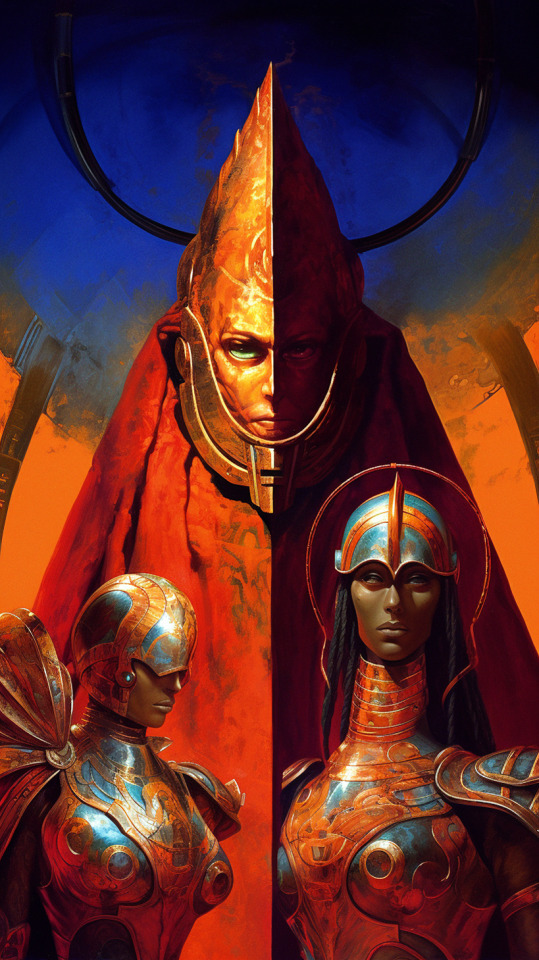
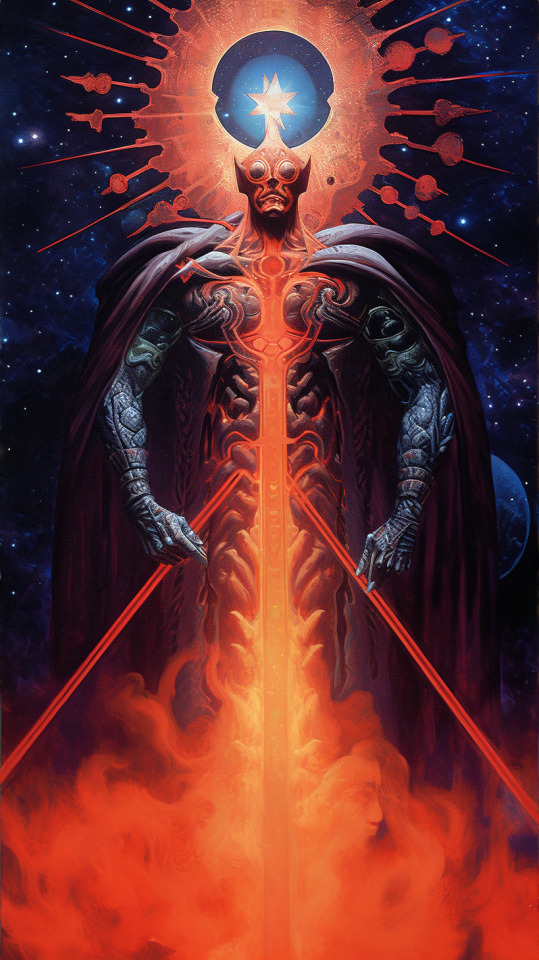

Marduk is an ancient Mesopotamian god who ascended through the ranks of the Babylonian pantheon to become one of the most powerful gods. Babylon became the epicenter of the Euphrates Valley during the Hammurabi period, about the 18th century BCE. By the second millennium BCE, he had become the patron god of Babylon, and his temple, the well-known ziggurat, is thought to have inspired the biblical Tower of Babel.
He was known in the first century as Bel, which means “Lord” in Akkadian, although his name translates to “bull-calf.” Marduk was a god with 50 different names, each one denoting a divine trait. His supremacy over the other gods began when he defeated Tiamat, goddess of the sea, earning him the nickname “warrior god.”
Marduk was associated with the planet Jupiter in Babylonian astrology. In addition, he was identified as the equivalent of Zeus or Apollo in Greek mythology for the Babylonian pantheon and Jupiter himself in Roman mythology.
Marduk "solar calf" Mesopotamian God Talon Abraxas
63 notes
·
View notes
Text
Moonana announces fantasy strategy RPG Clowned King for PC - Gematsu

Virgo Versus the Zodiac and Keylocker: Turn Based Cyberpunk Action developer Moonana has announced Clowned King, a fantasy strategy RPG coming to PC via Steam. A release date was not announced. Development started in 2024.
Here is an overview of the game, via its Steam page:
About
In a world made of glass… …an exiled Prince conceals his bloody past behind a mask of laughter. Clowned King is a turn-based tactical fantasy RPG in which you lead a performing troupe of clowns through The Moonlit Kingdom, currying favor with lords in support of your rebellion against your father, the Mad King Marduk. Your success will be determined in the battlefield as you take on your foes in Tactical Grid-Based Combat and prove yourself worthy as a successor to the throne of glass, in this fantasy tactical adventure inspired by Disgaea, Fire Emblem, and Brazilian culture.
Key Features
Battle Formations – With a unique take on the tactical genre, Clowned King features its own Formation system where being surrounded by allies on advantageous spots will enable your units to join forces in a FORMATION. This formation unlocks a special attack or defense that is unique to the kind of formation they created. This could act as a large shield barrier or a magic powerhouse.
Your Choices Matter – As Clown Prince Matheus, you will be faced with difficult choices along the path towards the throne. The decisions you make in those moments will determine the course of the story in this rich narrative with multiple endings.
Manage Your Troupe – Build your party of entertainers as you travel through the floating islands of glass, making friends, allies and enemies, with a large variation of units featuring unique combat styles. This game will also feature an immense amount of mage class types.
Make Powerful Allegiances – Bond with leaders from opposing realms to help support your fight against the Mad King.
Build Your Own Campaigns – A fully featured campaign editor will allow players to create their own Custom Campaigns and share with others to play.
Watch the teaser trailer below. View the first screenshots at the gallery.
Announce Teaser Trailer
youtube
9 notes
·
View notes
Text


⚔️ PUTRESCENT KNIGHT - "Lamenting Visage" ⚔️
Vile, disgusting black metal hailing from the depths of East Tennessee. Putrescent Knight takes inspiration from second-wave pioneers like Darkthrone, Marduk, and Judas Iscariot. Their five-track debut, "Lamenting Visage," is a relentless assault on the senses, with distorted vocals, dissonant guitars, and punishing drums.
Bandcamp: https://putrescentknight.bandcamp.com/album/lamenting-visage
Instagram: https://www.instagram.com/putrescent_knightrbm
Prepare yourself for an auditory onslaught, as Putrescent Knight weaves a grim tapestry of rot and decay, seldom heard in modern black metal.
🎧 Available now on all streaming platforms. Embrace the darkness. 🌑
#PutrescentKnight#BlackMetal#LamentingVisage#SecondWaveBlackMetal#Darkthrone#Marduk#JudasIscariot#EastTennesseeMetal#UndergroundMetal#MetalCommunity#supportblackmetal
#metal#burzum#metalmusic#black metal#heavymetal#true norwegian black metal#satanic#mayhem#blackmetal#youtube
9 notes
·
View notes
Text
The Two Worlds of Highrook
(part 2 ) Nibiru

“Nibiru, the hidden twin, the unseen mirror, the cast shadow. A citadel island outside of time, created by The End to act as a shelter and a rebuke.” - The path across the water - Vilicent Moore
Niburu is a mirror world accessible only in dreams and ritual. It exists alongside the mundane world of BlackSands like a shadow, an ethereal isle of twisted terrain and cyclopean geometry. Dark tides lap at its ashen beaches, forming a barrier between the waking world and the nightmare domain.
Beyond the shore Nibiru is walled in labyrinthine circles, like Dantes visions. Strange geometric divisions, marking time and territory, like ripples frozen in water. Each circle is host to its own unholy denizens and uncanny architecture.
Nibiru floats outside of time or space and is only accessible through gateways that exist in the darkest corners of the earth or the deepest chambers of the mind. It cares not for the sunlit world and waits patiently for its demise. The Watchers of the First Circle writhe upon the ramparts, marking the fading sun with their unceasing gaze. The Key stands before the prismatic gates.

Influences
The mirror world that lurks unseen alongside Blacksands is named after the myth of the Niburu Cataclysm. This is a rich and multifaceted legend based on the idea that an unseen planet will one day destroy the earth, in an unavoidable catastrophic collision.
Although recent iterations of the idea are linked to millennial era conspiracy theories, the original source is taken from ancient Mesopotamian and Sumerian texts. In these texts, Nibiru is the "star of Marduk" - one of the most powerful gods of the Babylonian era
In the various interpretations this planet (also known as Planet X or Marduk) is described as invisible, hidden by astrospacial effects, or able to warp in and out of our dimensional plane. It is the home to a sentient alien race, described as gods by the ancient sumerians. It was part of the inspiration for the Lars Von Trier film Melancholia and has frequently resurfaced as part of internet memes and conspiracy theories. It is also a term in Akkadian language for a crossing or equinox.
All of these elements make the myth a rich and inspirational source for the creation of its 'reflection' in Highrook. I'm not trying to create an accurate version of the myth in the game, but I am using the amazing premise and evocative lore as a seed to create my own dark mirror world - A cosmic shadow plane, an island citadel, home to transfigured beings, once human but now ‘ascended’ and incorporated into a pantheon of powerful nightmarish beings.
Just as the waking world of Blacksands emerged from my interest in the cities of gothic fiction and cosmic horror, the unseen twin of Nibiru is inspired by countless myths of hidden apocalyptic worlds..
6 notes
·
View notes
Note
I ended up watching three or so videos about the origins of Yahweh (idk if you mind it being written but idk how else to be more specific, excuse me). And it was talking about ancient pantheistic religion in the Levant and the other gods of the time (El, Ba’al, Asherat?). And, anyway, I found it all quite interesting. Even hearing about, idk, what life in that region was perhaps like at that time. And the time period of the transition from pre-history to recorded history. Do you have anything to share about this? Hope you’re having a good winter, Ty.
hashem—the god of the israelites—was a good ancient near eastern god. he, like his co-equals, hosted a divine council of heavenly bodies. he, like his co-equals, was a familial god, a storm god. fiercely loyal, jealous, violent in his love, natural in his theophanies. the israelites who composed and were composed by the hebrew bible drew great inspiration from marduk, el, ashera, ištar, on and on. this god is figured in this way—a way like so many other gods of the ancient near east—because it worked. it met bodies where they were. it filled the hole just below the ribs
24 notes
·
View notes
Text

⫸ P I N N E D P O S T
I'm an ambitious dweller from Finland who works as a 3D artist by day and a 2D artist by night. Feel free to call me NK, Sav or Savannah.
I do plenty of webcomics, OC art, fanart and the occasional yearly art challenge. Once in a blue moon I might even surprise you with 3D art or animation.
@nk-os is my side blog for shitposting and inspiration @chroma-game is a blog dedicated to a game project @dandelionmischief and I are working on
⫸ L I N K S
Tapas Deviantart Instagram Bluesky
⫸ T A G S
#nk - #nkos - #orangesavannah - All my artwork are tagged these #step aside - #sa - Step Aside comic related #apathy - Apathy comic related #ittri - The funky ocs without faces, both shown in Apathy and Step Aside #four of shards - Cool looking armored beings who may or may not get stories sometime in the future #shard to a flame - A four of shards romance comic featuring Marduk and Lumi (made by me and @alopex26) #chroma - Visual novel game related #other people's art - #art for me - Self explanatory #fanart - Most often transformers related or anything else I happen to be geeking out over at any given time
40 notes
·
View notes
Text

A fresco "Trionfo della Morte" (Triumph of Death) made by Giacomo Borlone de Buschis in 1485.
Inspiration for MARDUK - Rom 5:12
The album title refers to a verse in the Bible, Romans Chapter 5, Verse 12:
"Therefore, just as sin entered the world through one man, and death throught sin, and in this way death came to all men, because all sinned."
25 notes
·
View notes
Text

Marduk, god of Soil
[@shiroi---kumo inspired me to do a take on Kaze far in the future, when he comes to accept his godly persona of Marduk-alihkar. The custom syajhir represents the deity's attributes - various glyphs of Soil magic, as well as the sigil of kiichimarichuril, the "red haired children" and "red cattle of the sun", the heritage of which was demonized by the Windarian High Temple. The four wings of Marduk's cape represent the Four Winds (wind. Navo Rorahmi) - holy messengers of the Soil Spiral. The Divine Wind Weapon, Magun (wind. Imhullu) is kept hidden under the cape.]
[Inspirations below cut]
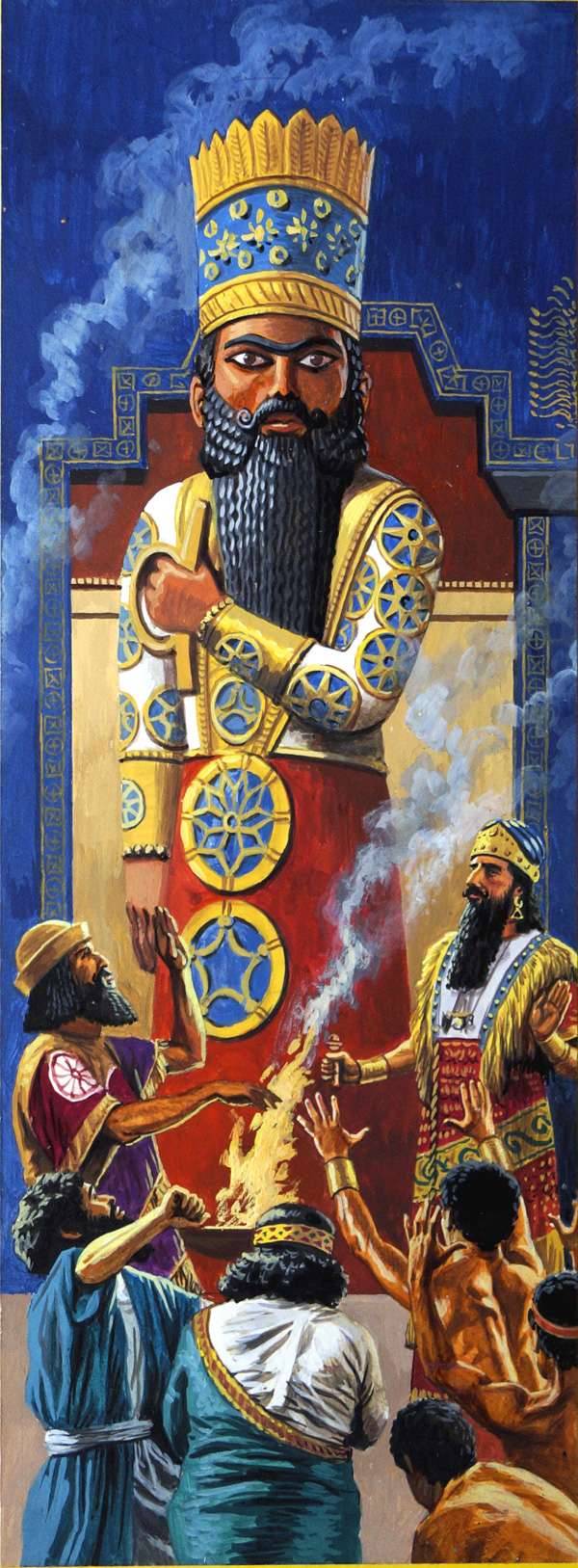
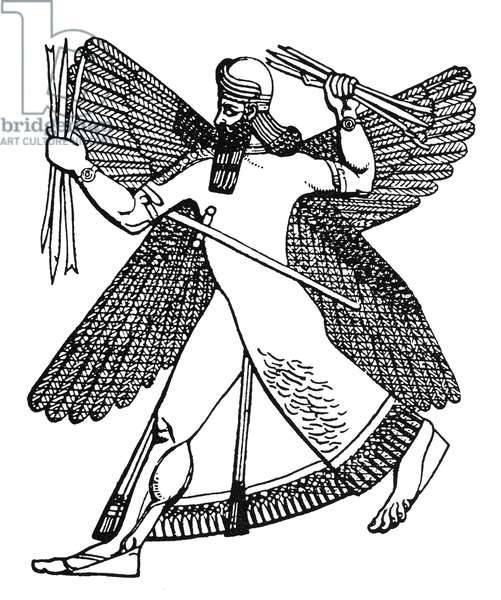
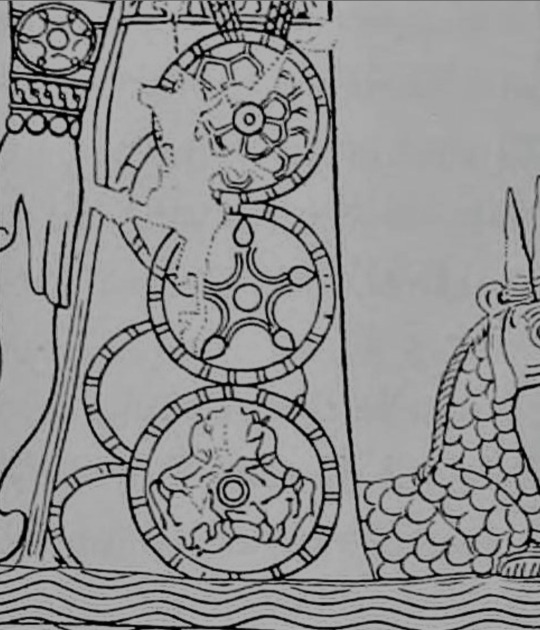
[Various iconography associated with the real world Marduk, a patron god of Babylon.]
#final fantasy unlimited#ff:u#ffu#kuroki kaze#kaze kuroki#my art#he keeps Orthrus I just forgot to draw it lol#well. a version of orthrus anyway. its been so long he likely got it replaced and upgraded many times over but kept the general appearance#he wears his hair braided!#I WILL do a turnaround later prommy#[[headcanon
23 notes
·
View notes
Text
Intangir

A cut enemy from "Imprisoned Chain", a project currently in it's very early stages of development. Imprisoned Chain is an SRPG/life sim/horror hybrid heavily inspired by SMT Devil Survivor, Danganrompa, Zero Escape, and FNAF. Originally the game would be a lot more inspired by Devil Survivor with a law, chaos, and neutral route, but this was changed to instead be a death game that quickly goes off the rails when no one wants to participate and evil demonic animatronics have to be engaged to take everyone out.
In the original version of the game Ingangir was the original final boss of most of the routes, being a corrupted form of the god Marduk who wanted to destroy humanity. The new plot could no longer fit him in due to being a death game with killer animatronics and being a lot more based in sci-fi nonsense and horror rather than religious stuff like before, so he was cut. The new final boss is a massive spoiler for the game, (they're the imposter/mastermind and one of the 9 playable characters) but the placement of Imprisoned Chain in the official timeline stated somewhere in this blog may hold a clue.
#pixel art#pixel sprite#sprite art#pixel graphics#pixel aesthetic#pixelart#gamedev#indiegamedev#rpg maker#indie game
4 notes
·
View notes
Text
Maybe we should bring back (some kind of secular thing inspired by?) that ancient Babylonian ritual where once a year the priest of Marduk was supposed to slap the king as hard as he could (and it was considered a bad omen if the king didn't cry from the blow) and the king would have to throw himself down on the floor and be all like "I've protected the poor and haven't terrorized anyone this year with my authority and have been merciful and never cruel and have prioritized fairness and the good of the people in all my decisions" etc etc with the understanding that if he's lying he'll be swiftly punished and likely die, and if he can't sincerely claim to have abstained from abusing his power then when he walks out of the temple the people gathered for the yearly festival are probably gonna tear him apart before the gods even get a chance to
7 notes
·
View notes
Text
Dr Fate Reimagining


A little before Young Justice season 4 had come out, I decided to reimagine Dr Fate as a better foil to that version of Klarion. The main inspiration here was 'if chaos is a monochromatic boy in puritan clothes, order should be colorful and theatrical' and decided that the idea of the helmet of fate as a Venetian carnival mask was fun.
Her color scheme is jewel-toned green, teals, and blues with gold accents. She is near every color of the rainbow but green is the most prominent, contrasting Klarion's red. Her magic would also be white in part to balance out her very colorful design.
Another thing I wanted to change after seeing season 4 is Nabu... I don't think he should Nabu. Its comic accurate but I'm already changing so much. In canon, the spirit possessing the helmet is Nabu and his father in life was Marduk, also known as Vandal Savage. Personally, Savage makes more sense as Marduk's father in the mythology, Enki, god of water and creation. This would make the spirit possessing the helmet Marduk, who defeats primordial chaos and has many names, one of them being Bel (meaning 'lord') a god of order and destiny.
Story-wise: This young girl (roughly 10-13 when she takes up the mantle she's drawn older on the right) would probably know Kent a year or so before his death by more natural causes. She becomes Fate in his absence but doesn't really make any public appearances. This would worry the JLA (given that they don't know he's dead) and they would send The Team to check on him.
She'd be a more prominent presence, but I don't see her joining the team as she wouldn't really fit in during this point of the story (that and she is younger than they recruit).
From a creation standpoint, drawing something like the mask is awful in my more simplistic style but it does have all of the swirls in the reference image. It would also be gold and white, instead of just gold.
Speaking of references, I wanted to include mine as I don't feel as though I portrayed what I was imaging in my drawing. The third arm is a motion thing and not an actual or magic arm.
6 notes
·
View notes